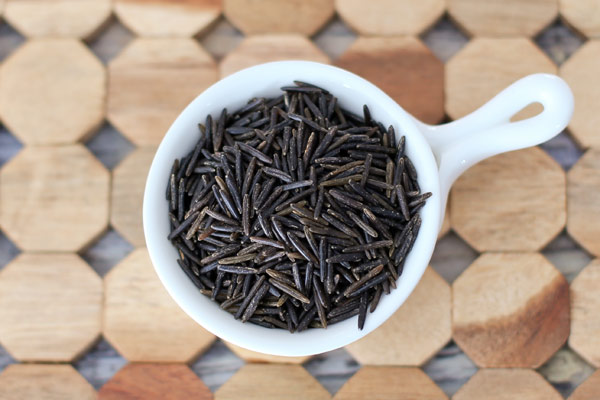About Rice: Rice History, Varieties, and How to Cook
by Author: Diana Rattray
, June 30, 2017

Some History
Rice has been grown and eaten for thousands of years. It's a cereal grass that is believed to have originated in the Himalayas. Rice was not originally a tropical crop as one might think from the places it is grown today. The practice of growing it in flooded fields was developed as a way to discourage vermin, keep weeds to a minimum, and increase yields.Rice can also be grown on higher ground, even mountain sides. Most rice grown in South America is this "upland rice," as opposed to rice grown in flooded fields.
Rice cultivation in the United States began in the Carolinas in the late 17th century with seeds that were purported to have been brought from Madagascar. US rice was successful in large part due to the presence of slaves who had cultivated rice in Africa. American rice suffered a severe setback during the Revolutionary War when the British seized the entire crop and sent it back to England, leaving not even seeds for new crops. Thomas Jefferson is said to have gone to Italy in 1787 and brought back rice seed to revive the industry. "Carolina Rice" is the resulting long grain variety that became a major crop in the 19th century. Today very little rice is grown in the Carolinas and American rice growing has shifted to the Gulf states and to California, which has become the main American producer of short grain rice.
Rice Varieties
There are thousands of varieties of rice, but it is broadly classified by the size of the grains: long, medium, or short.Long-grain rice is long and slender and can be found in both white and brown varieties. The grains remain somewhat firm and separate when cooked. It is easily fluffed after cooking. Much of the long grain rice in the US is Carolina rice or imported from Asia.
Short-grain rice, which is more popular in the Eastern countries, becomes very "sticky" and clump together when cooked, and this is the basis for Asian "sticky rice." The grains of long grain rice tend to stay separate even after cooking. One of the reasons that sticky rice is preferred in the Far East is that it is easier to eat with chopsticks because of the way it clumps. Sometimes it is said that short grain rice sticks together because it is more "glutinous," but that is a misnomer. Rice does not contain any gluten.
Medium-grain rice is about halfway between these two, both in length and in its starchiness and stickiness. It is a good rice for puddings, desserts, risotto, and sushi.
Rice is also classified according to how it is processed. "White rice" has been polished until all the bran is removed, while "brown rice" has the bran left on. Removing the bran removes most of the vitamins and minerals from white rice, so white rice is sometimes "enriched" to add some of them back. Southeast Asian "Black rice," Philippine "purple rice," and Chinese "red rice" are unpolished or brown rice varieties. It's slight differences in the colors of their outer layers that give them their names.
Rice may be parboiled and then dried to produce a product with reduced final cooking time, such as "Minute Rice."
In the 1940s, a Texas man named Gordon Hartwell borrowed the British process of treating rice with pressurized steam before polishing. This process is said to force vitamins and minerals from the bran into the kernel to make white rice more nutritious. Rice that is processed this way is called "converted rice," an example being the famous "Uncle Ben's." Converted rice is firmer and more stable than regular long grain rice and will not break down as quickly if overcooked. It is a good rice to use in slow cooker recipes.
"Wild rice" (Zizania aquatica) is not really rice at all. It is a marsh grass native to the Northern Great Lakes in the U.S., where it was part of the Native American diet. It has a nutty flavor and is quite tasty on its own or mixed with real rice.
"Basmati rice" is a long grained rice popular in India that is aged to decrease its moisture content and to develop its unique aroma and flavor. "Jasmine rice" is a long grained rice grown mainly in Thailand and is notable for its softness and aroma. "Arborio rice" is a short-grain starchy Italian variety of rice that is used to make risotto and rice pudding. "Yellow rice" is not a variety of rice, but is a rice dish, with the yellow color coming from spices in the dish.
How to Cook Rice on the Stovetop
- In a 2-quart saucepan with a tight-fitting lid, bring 2 cups of water seasoned with about 1/2 teaspoon of salt to a rolling boil.
- Pour in 1 cup of long-grain rice.
- Reduce heat to low, cover the pan, and cook without stirring for about 20 minutes.
- Remove from heat and leave covered until serving time.
- Fluff with a fork just before serving.
- This will make about 4 servings.
- If your rice is done but there's excess water, drain using a colander.
- For flavored rice, use chicken, vegetable, or other broth in place of the liquid.
See Also
Flour Types and How to Substitute
Easy Skillet Chicken and Rice Curry
Easy Brown Rice Bake
Site Search
